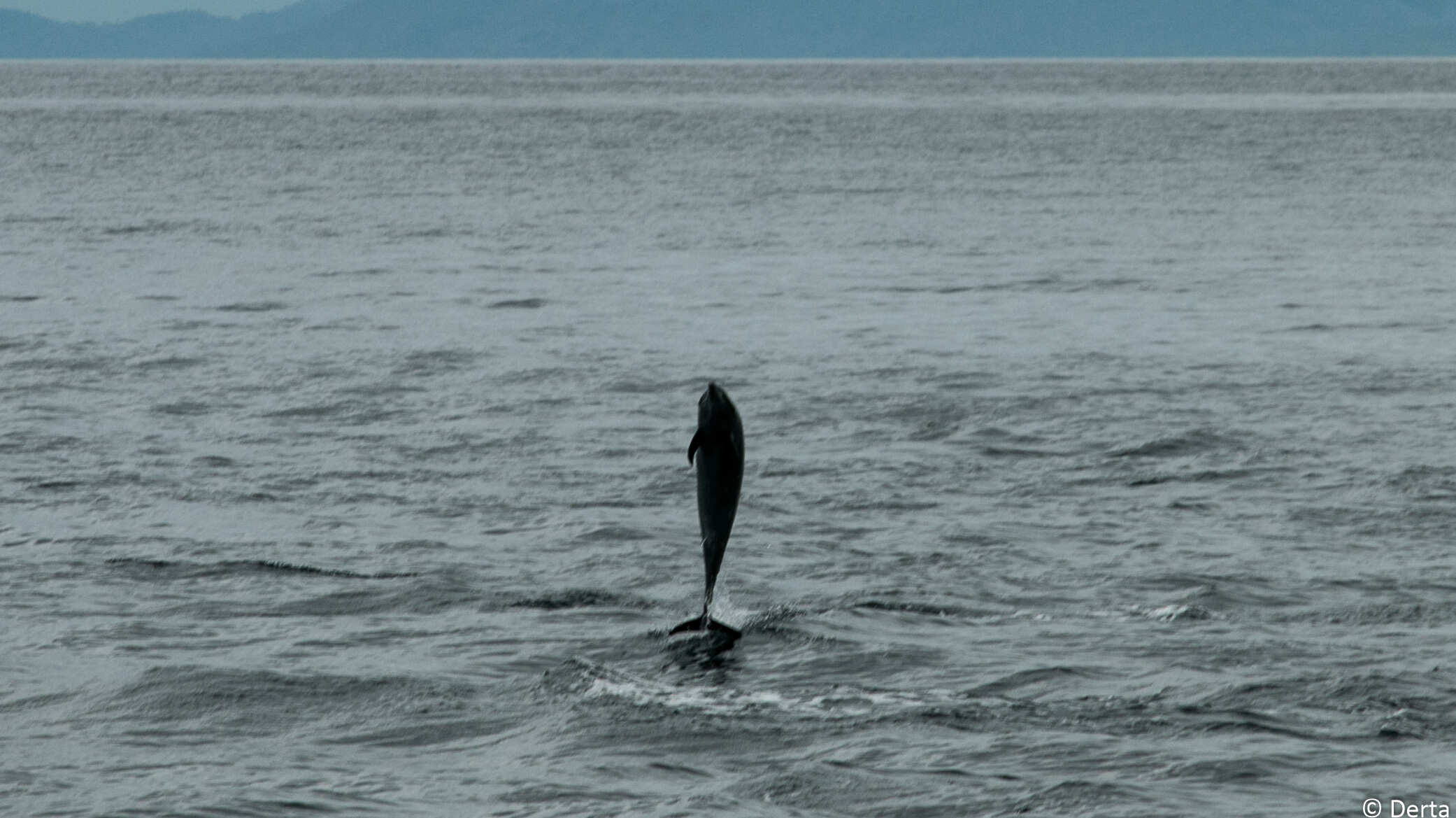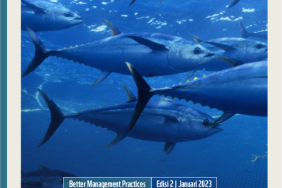THE FATE OF DOLPHINS CAUGHT IN FISHING NETS IN SOUTH SORONG
"When I was catching fish using a net near the New Harbor, I saw that the dolphin was wrapped around, so I started to pull the net and lifted it onto the boat then I brought the dolphin to Safolo Village," said Samuel when interviewed. Samuel is an active fisherman who relies on the fisheries potential around the estuarine waters of South Sorong Regency to fulfill his daily needs. He always uses nets as his main fishing gear.
On Monday, March 16, 2020 at around 9:00 a.m. WIT, a dolphin suspected to be a Humpback Dolphin (Sousa chinensis) was found accidentally entangled in drift gillnet fishing gear (gillnet)in a dead condition or included in Code 2 or recently dead. Code 2 is characterized by; the animal is motionless, no reflexes, not breathing, the flesh is still firm, the carcass is odorless, and the animal's eyes are not shiny.
The location where the dolphin was caught was near Baru Harbor, Wersar Village. This area is one of the places where dolphins are often found in groups and play along the Teminabuan River estuary. This area is also a regular sea transportation route in and out of Teminabuan, the capital of South Sorong Regency.
The photos of the stranded dolphins were spread to various social media, based on this information, the WWF-Indonesia Fisheries Enumerator field team as the implementing partner of the USAID Sustainable Ecosystems Advanced (USAID SEA) Project coordinated with the West Papua stranded marine mammal handling first responder network to conduct field checks. At 13.00 WIT, the team searched for information and found that the dolphin had been cut into pieces for consumption. Under these conditions, the field team continued to observe and collect information about the dolphin entangled in the net. The observation results showed that the dolphin's length reached 1.5 m, while the sex was unknown.
The people of Safolo Village began to arrive to see the condition of the dolphin that was being cut into several parts on the riverbank. One of them is Mama Maria, who is one of those who lives on the banks of the Safolo Village river, she claimed to have seen other fishermen land dolphins 2 to 3 times over the past year, even with a larger size. "The previous case the dolphin was found alive so it was released back to the sea," she said.
He also added, "Some people who live in Safolo Village never want to take dolphins, let alone eat them. We can't bear it because dolphins are believed to be helpers in the event of a disaster at sea and are afraid that there are events that might affect those who live on the riverbank as a result of taking and consuming dolphins." But unfortunately, not all people who live in Safolo Village believe that so dolphin meat is still consumed by some people. Safolo Village fishermen also do not know the regulations on dolphin protection and how to handle dolphins if stranded or caught in their nets. "There has been no socialization from any party," said Mama Maria.
After checking the condition of the dolphins, the Fisheries Enumerator team tried to provide understanding to several people who live on the coast of the river about the full protection status of dolphins and the importance of maintaining dolphin populations in nature as well as dolphin handling procedures if caught alive or dead.
Currently, all types of marine mammals including whales, dolphins, porpoises and dugongs found in Indonesian waters are fully protected under the Regulation of the Minister of Environment and Forestry of the Republic of Indonesia Number P.106/MENLHK/SETJEN/KUM.1/12/2018 on Protected Plant and Animal Species. The sustainability of marine mammal conservation in Indonesia has also been stipulated in the Decree of the Minister of Marine Affairs and Fisheries of the Republic of Indonesia Number 79/KEPMEN-KP/2018 on the National Action Plan for Marine Mammal Conservation 2018-2022.
Seeing the frequent occurrence of stranded marine mammals, socialization regarding endangered, threatened and protected marine animals, as well as how to handle stranded marine mammals, and caught in fishermen's fishing gear both alive and dead still need to be done so that in the future the community is more alert to handle properly and independently if an incident like this occurs again. Furthermore, WWF-Indonesia in the USAID SEA Project with related partners will hold a second marine mammal handling training focused at the government level, and will evaluate the training at the community level that has been carried out in 2018. This training is also one of the efforts to maintain the dolphin population in the Teo-Enebikia River One Thousand and One Rivers Marine Protected Area Candidate in South Sorong.
In addition, efforts to handle stranded or accidentally caught marine mammals need to be developed collaboratively with various parties, because the handling process requires adequate facilities and infrastructure and is spread across government agencies. In addition, there is a need for a good communication and coordination network among stakeholders so that information on scattered incidents can be quickly handled.





